Building a Better Future with BUNA
Buna’s mission is to “share rich chocolate and coffee to conserve Mexican ecosystems.” While this statement appears simple enough, it contains many layers, and encompasses the Buna team’s commitment to educating themselves about biodiversity and regional soil types, forming meaningful partnerships with local farmers, and creating a conservation first business model that can inspire others to do the same. We talked to Buna’s Alberto Rivera, Partner and Head of New Projects, and Eduardo Perez, Partner and Director at BUNA about this mission, it’s evolution, and what is to come.

So nice to meet you! Can you tell us more about BUNA, and how the company got started?
BUNA got started in 2012. A group of friends came together to start a company based on values we wished were represented by businesses, and chose coffee as a means to participate in the conservation of ecosystems.
Who makes up the team at BUNA, and where are you all located?
24 of us now are a part of this small team, and our roastery and headquarters are in Mexico City. The entire team spends time traveling to farms and coffee producers year round.

You share that BUNA’s focus is conservation. Why is this especially important to focus on in Mexico, and specifically in the industries of coffee, chocolate and honey?
Conservation should not be specific to Mexico – we hope business oriented conservation happens everywhere. We work in Mexico because this is where we are from and we are in love with the diversity of ecosystems present in our geography. Coffee is the second most traded commodity on earth, cacao has long cultural roots in our ancestry, and honey is produced by insects that provide important ecosystem roles. These three products open a massive opportunity to work in the social and ecological space.
How do you initially make a connection with the Mexican farmers you work with? Once the connection is made, what are the next steps in creating a supportive partnership?
Time has changed how we find producers. It started out pointing at maps, and now we look for willful people who are a part of strong communities and want to face the challenge it takes to produce conservation agriculture. A supportive partnership is maintained through empathy, collaboration, vulnerability, curiosity and knowing there is always a better way to do things. These are also our company values.

Would you mind sharing for our customers each of BUNA’s values and how they tie in to the work that you do?
Our values, which I mentioned above, are how we approach everything. We do a lot of work to cultivate them within ourselves as individuals and to create a culture that supports and encourages them. From them, we believe we can participate in the world we would like to be a part of. They inform every decision we make.
We’d love to learn more about the coffee, chocolate and honey you currently have featured! Where do they come from, and who are the growers and producers behind them?
We work with producers in Oaxaca, Veracruz, Chiapas, State of Mexico, Guerrero, Tabasco and Hidalgo. We work with over 350 producers, who are all committed to biological agriculture. Over the years, some have remained with the simplest version of this (replacing chemical with organic inputs) and others have advanced into our more developed and intensive agroforestry platform. This is an amazing practice that promotes soil, plant and animal biodiversity, while also producing a crop. It's hard work and only a few producers have continued onto this level. We are focusing most of our energy on assisting them through our technical assistance program.

We love the artwork that adorns BUNA’s products! Can you tell us more about how you came up with these designs and aesthetic?
We love them too! These came about from a frustration of realizing we humans are quite bad at assessing technical information. How does a coffee from 1,700masl compare to one from 2,100masl? While there are certainly attributes that correspond to certain technical details, really most consumers aren't equipped to decipher that. It promotes consumers buying what they know and we lost the ability to share new coffees.The artwork is inspired by a psychological experiment that proves we all have what we call "emotional intelligence.” Across cultures and languages we respond similarly to certain things. Kiki, bouba...The artwork is meant to help consumers use their intuition, instead of technical information, in their buying decision. It sounds crazy, but it works, and the art looks beautiful.
Where can one find BUNA’s coffee in Mexico, and beyond?
BUNA can be found in many of the city's restaurants (Rosetta, Quintonil, Rokai, Eno, Delirio, Pujol, Em) and at many retail shops. You can also come to our coffee shops, one in Roma, and the other at our roastery in Doctores. Several places across the US retail our bags and some restaurants in NYC serve our coffee (Cosme, Blue Hill at Stone Barns).

What does 2022 have in store for BUNA?
Always a mystery! We will continue to deepen our work with agriculture. Increased biodiversity. Chocolate. Mushrooms. Mushrooms in chocolate. That's all I can say for now.
How can we all work to help make the industries of coffee, chocolate, and honey more equitable, environmentally conscious, and sustainable?
OMG, this requires a conference to answer! But if I could say it concisely, we need to not shy away from the social and environmental challenges the industry faces. Roll up our sleeves and get to work. We're soon to publish our impact report. I'd love to see more companies reporting on how their actions affect key environmental and social indicators.
Website: buna.mx
Instagram: @bunamx
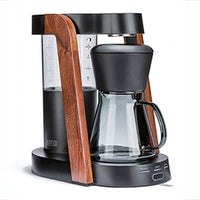 Ratio Eight S2
Ratio Eight S2
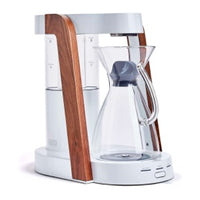 Ratio Eight Original
Ratio Eight Original
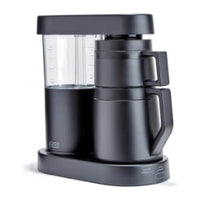 Ratio Six
Ratio Six
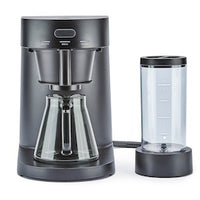 Ratio Four
Ratio Four
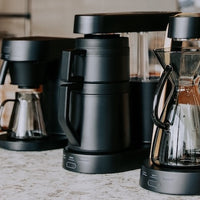 Compare Machines
Compare Machines






